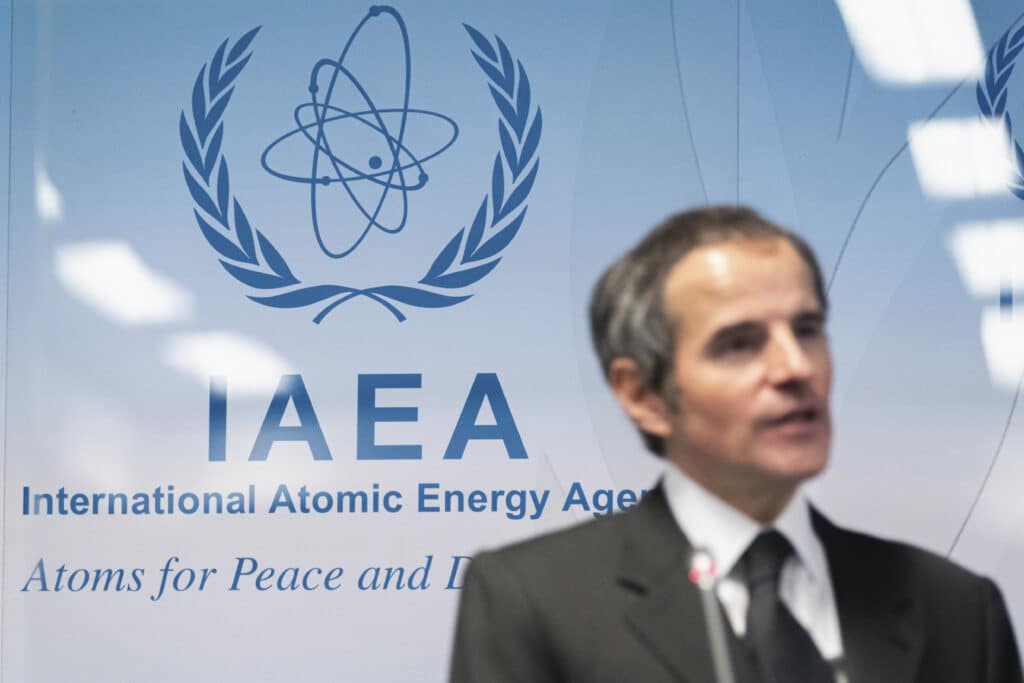Is Tehran Closer Than Ever to a Nuclear Bomb?
In levels never before seen, Tehran announced on November 5th it stockpiled 25 kilograms of uranium enriched to 60% and more than 210 kilograms of uranium enriched to 20%. Once uranium enrichment reaches 20%, it becomes highly enriched uranium (HEU), and nearly all of the effort to reach weapons-grade uranium has been completed. Approximately 12 kilograms of HEU at 90% is needed for a first-generation nuclear weapon. With Iran only a step away from weapons-grade uranium, the Biden Administration’s timeline to strike a deal is under increasing pressure. But, for Tehran and Washington, negotiations have remained stalled. Despite the announcement that talks will resume on November 29th, it is uncertain if Iran will rejoin the 2015 Joint Comprehensive Plan of Action (JCPOA). What is becoming apparent is that the U.S. must consider other options despite the Biden Administration’s oft stated desire to return to the failed JCPOA.
Last month, indicating frustration about the opportunity to return to the original deal, Secretary of State Antony Blinken said that the U.S. “will look at every option to deal with the challenge posed by Iran.” This statement signals that the U.S. could resort to military action if diplomacy fails, but the seriousness of such assertions after Afghanistan echoes Obama’s “red line” in Syria. If the U.S. was unwilling to use its military to prevent a Taliban takeover in Afghanistan after 20 years of tremendous commitment, it is less credible to think that the U.S. would use its military to prevent a nuclear armed Iran.
While originally joining the JCPOA absent safeguards against Iran’s ballistic missile program and its destabilizing regional activity was a strategic mistake, the U.S. withdrawal from the JCPOA in May 2018 did not diminish Iran’s regional threat to U.S. forces and partners and did not motivate Iran to return to the negotiating table, despite the effectiveness of the U.S. “maximum pressure” campaign. Iran’s gross reserves reportedly fell from $122.5 billion in 2018 to $12.4 billion in 2019 to $4 billion in 2020. Still, the Trump Administration was unable to adequately influence Iranian behavior, regardless of the harsh effects of sanctions. Notwithstanding previous missteps, there is a way forward with Iran.
From the outset, the original JCPOA failed to address Iran’s ballistic missiles, use of regional proxies, and lacked involvement of regional partners in negotiating the deal. In 2015, the JCPOA was agreed upon by Iran and the P5+1, which included the permanent members of the United Nations Security Council – the U.S., United Kingdom, Russia, France, and China – plus Germany. Regional stakeholders, including the Gulf Cooperation Council (GCC) states, were not involved in the JCPOA’s initial negotiations, creating uncertainty between the U.S. and regional partners and ignoring crucial regional security issues. Moving forward, any agreement with Iran – especially one addressing regional proxies and the IRGC’s exterritorial activities – must involve input from GCC nations in order to advance the regional security dialogue and effectively address Iran’s regional posture.
Prior to recent negotiations, the Biden Administration said that Washington would seek a follow-on deal regarding other “deeply problematic” issues with Iran, which should include the malign behavior of Tehran’s regional proxies, its expanding ballistic missile program, and its rapidly expanding cruise missile and unmanned attack vehicle (UAV) activity. Iran’s regional posture did not change, in part, under the original JCPOA because the deal did not address Iran’s proxy activity in Iraq, Syria, Lebanon, and Yemen. This malign activity is destabilizing to the region and the very hallmark of Iran’s national security goals. Unlike its nuclear program, these activities arguably are more challenging to identify, quantify, and negotiate.
Before re-joining JCPOA or striking another deal with Iran, the U.S. must consider how to address Iran’s regional behavior, ballistic missile, and UAV/cruise missile development in addition to the nuclear issue. While the nuclear issue is important, it is not as vital to Iran as its use of regional proxies, which was one of many reasons that the original JCPOA was simultaneously appealing to Tehran and destined for failure. Furthermore, the original JCPOA was not debated by Congress, so it was easily undone by executive order. It is imperative that the U.S. does not make this mistake again: any future agreement with Iran must be a treaty that is properly approved in accordance with the U.S. Constitution.
As Iran continues to develop enrichment capability well in excess of the JCPOA, Israel’s potential response to Iranian military developments remains an essential and oft overlooked point of interest. This week, Israeli Defense Force Chief of Staff Lieutenant General Aviv Kohavi said that Israel was accelerating its operational military plans and preparedness against Iran’s nuclear and conventional military threat. Comments such as these are a clear signal of possible military confrontation between Israel and Iran. A kinetic strike by Israel against Iran’s nuclear facilities is possible if Iran continues enriching uranium toward weapons-grade U-235.
As political posturing between the U.S., Iran, and Israel continues, the Biden Administration is under pressure to act quickly and decisively to prevent the chance of miscalculation on all sides.







